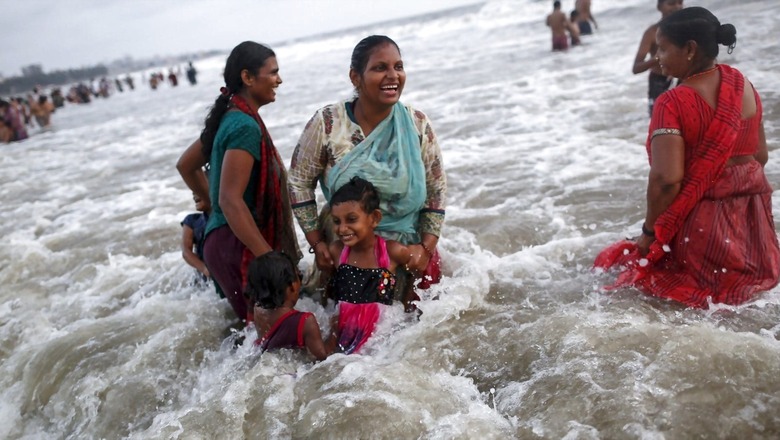
views
With global oceans warming faster than ever before, countries like India stand most vulnerable with its vast coastal populations, the World Meteorological Organisation (WMO) has warned in its latest global report. It lists Mumbai among the big coastal cities, which could be most affected due to this climate change-induced disaster.
According to the report, even if global heating is miraculously limited to 1.5 degrees — the goal of the Paris Climate Agreement — there will still be a sizable rise in sea level. Under any scenario, countries like Bangladesh, China, India and the Netherlands are all at risk, it stated.
Rising sea-level would not only lead to loss of coastal ecosystems and services, but groundwater salinisation, flooding and damage to coastal infrastructure. It also imposes risks to economies, livelihoods, and water security in the areas, which are already vulnerable to storm surges and tidal variations.
The data shows that the average rate of sea level rise was 1.3 mm yr–1 between 1901 and 1971, increasing to 1.9 mm yr–1 between 1971 and 2006, and further increasing to 3.7 mm/yr between 2006 and 2018. WMO has reported that during the period 2013-22 sea level rise has been 4.5 mm/yr – highest so far. Another challenge is that this sea-level rise is not globally uniform and varies regionally.
With an over 7,500-km-long coastline spread across nine coastal states, 12 major, and 200 minor ports, India could face serious long-term effects. “The report has once again highlighted India’s vulnerability. The sea level rise also exposes the country to water insecurity because of salinity, as well as a decline in fish production,” said Anjal Prakash, Research Director from Bharti Institute of Public Policy and Lead Author for IPCC Reports.
According to Prakash, there is a need for more adaptation measures to secure the livelihood of fishermen, and ensuring water security in terms of providing safe and clean water to inhabitants of coastal areas. “We also need more discussion at the policy level not only for adaptation, but also to map climate impacts at the local level.”
Deliver on Loss and Damage Fund, UN Asks Rich Nations
Presenting the findings to the UN Security Council on Tuesday, UN Secretary-General António Guterres said developing countries must have the resources to adapt and build resilience against climate disaster. Among other things, this means delivering on the loss and damage fund, making good on the $100-billion climate finance commitment to developing countries, doubling adaptation finance, and leveraging massive private financing at a reasonable cost.
The UN chief also drew attention to the melting of glaciers and ice-sheets, the rate of which has increased by a factor of four between 1992-1999 and 2010-2019. “We’ve already seen how Himalayan melts have worsened flooding in Pakistan. But as these glaciers recede over the coming decades, over time, the Indus, Ganges and Brahmaputra rivers will shrink. And rising sea levels combined with a deep intrusion of saltwater will make large parts of their huge deltas simply uninhabitable,” he said.
According to the report, thermal expansion is responsible for 50% of sea-level rise during 1971-2018, ice loss from glaciers contributed 22%, ice sheets 20% and changes in land-water storage 8%. There is a risk of a much higher sea-level rise due to potential intrusion of sea water under the Antarctic glaciers, it warns.
Read all the Latest India News here

















Comments
0 comment